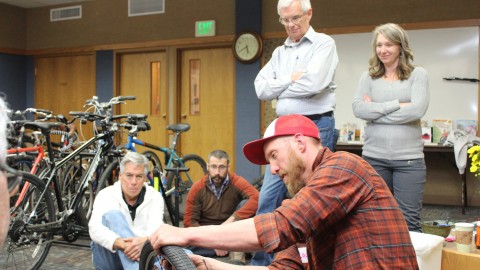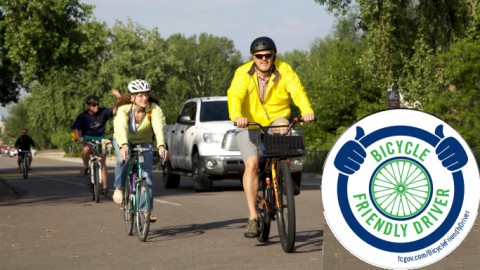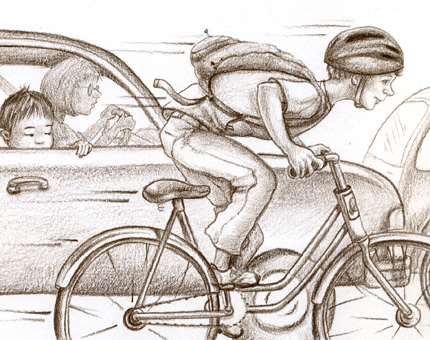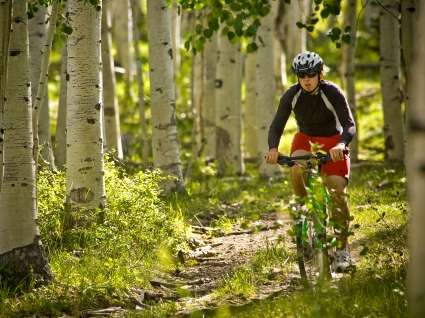If you are a cyclist, you are a member of a growing group who enjoys a fun, healthy, and environmentally-friendly form of transportation. Unfortunately, Mother Nature doesn’t always want to cooperate with your plans.
You can’t always ride when its sunny and clear, so you need to be prepared to face the different weather conditions you might face as a cyclist in Colorado.
Cycling in Heat
When you are cycling in extreme heat, you need to make sure you stay hydrated. So, here are a few tips to help you stay cool and hydrated.
- Take along a sports drink or water. Drink often, but only in very small amounts.
- Watch for hot pavement. When pavement gets too hot, it will have slick or sticky spots. There will be residue that sticks to your bike tires and that can cause a crash.
- Wear wicking clothes, which will keep the sweat off your skin and avoid irritation.
- When possible, cycle during the cooler hours of the day, which is early morning or late evening. The hottest time of the day is mid-afternoon.
- Wear waterproof sunscreen to protect your skin. Waterproof sunscreen will stay put even while you are sweating.
Cycling in the Rain
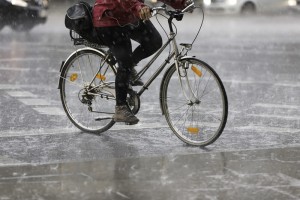 Riding in the rain can be enjoyable, if you are properly prepared. Here are a few tips.
Riding in the rain can be enjoyable, if you are properly prepared. Here are a few tips.
- Watch where you ride. Don’t ride across metal or bricks. They are slick, and you will lose traction easier.
- Visibility is important. Just as you would when riding after dark, make sure you are visible. Make sure you have a white headlight and a red taillight, both visible for several hundred feet. Have reflectors on the bike’s fenders, pedals, and spokes. Use reflective tape on your back and chest as well as your legs and arms. Wear reflective bands on your ankles and wrists.
- Consider the temperature. If it isn’t cold, don’t layer up. All the layers will get soaked and you will just be heavier and weighted down. Wear waterproof gear if you have it. Otherwise, wear a poncho over your clothing, so you can stay dry.
- Keep the water out of your eyes by wearing a visor or hat under your helmet. If the rain is pouring down, wear clear or light-colored sunglasses to help your vision and to keep the rain from impeding your vision.
- Avoid those water puddles. The murky water in those puddles could be holding hidden dangers, such as nails, glass, or rocks that could make you crash or leave your bike with a flat tire.
Cycling in the Snow
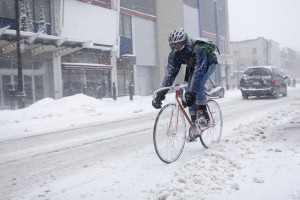 Winter is a beautiful time in Colorado, but it is also cold. Of course, there will be plenty of snow. Just because there is snow doesn’t mean you can’t cycle, just so long as you know what to do.
Winter is a beautiful time in Colorado, but it is also cold. Of course, there will be plenty of snow. Just because there is snow doesn’t mean you can’t cycle, just so long as you know what to do.
- Ride your bike inside tire tracks to get better traction.
- Ride a bike with fat tires or an old mountain bike, so you won’t find yourself slipping and sliding.
- Slow down because braking in the snow and ice can be more difficult. Pace yourself at a lower speed.
- Put fenders on your bike to protect yourself and other cyclists. Fenders help deflect the snow and ice, keeping it out of your face and eyes and off other cyclists.
- Traction is always the key, so lower the PSI in your bike tires.
- Stay visible with lights and reflectors on your bike and reflectors on you.
This article was created by Personal Injury Help (www.personalinjury-law.com), an organization dedicated to providing the public with information about personal injury and safety information. Nothing in this article should be construed as legal advice, and it is intended for informational use only. Be sure to review your local cycling ordinances to ensure you ride safe and legally.

